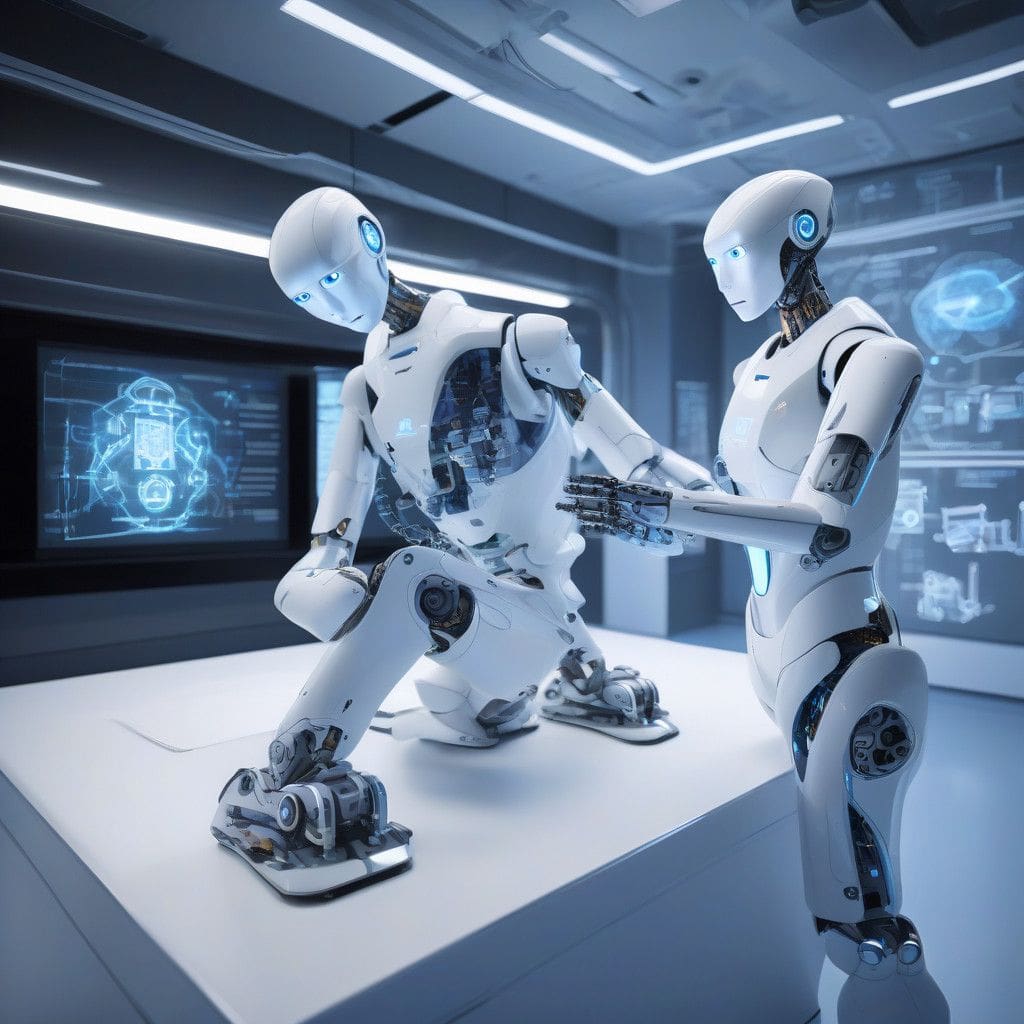A revolutionary leap in robotics training has emerged from London, where researchers at the Robot Learning Lab have developed Genima, an innovative system that uses AI-generated images to train robots more effectively. This advancement promises to transform how machines learn to perform complex tasks, making them more efficient and reliable in various operational settings.
Genima fine-tunes the Stable Diffusion model, employing it to create a sophisticated mapping of robot movements. This method allows robots to navigate both virtual environments and the real world by using image data as their primary input and feedback mechanism. The implications of this technology are vast, especially in tasks that require precision, such as picking up objects or even folding laundry—chores that now can be managed by machines with greater reliability.
Recent preliminary tests of Genima showcased its potential, achieving an impressive success rate of 50% on simulated tasks and 64% in realistic scenarios. While these percentages present room for improvement, researchers are optimistic. They believe that integrating advanced video-generation AI models could significantly enhance both the speed and accuracy of robotic operations. This kind of innovation is essential not only for driving performance but also for reducing the frequency of mistakes, such as collisions with objects or walls, which are common in robotic operations today.
The versatility of Genima is one of its most compelling features. Designed to be adaptable, the system can be applied across a multitude of robotic types, from mechanical arms used in manufacturing to autonomous vehicles navigating busy streets. This flexibility opens doors for wider application across industries, potentially aiding everything from logistics to personal assistance at home.
Take, for instance, the use of Genima in household robotics. Imagine a smart assistant robot that learns how to sort laundry or organize a kitchen simply by observing images of the tasks being performed. This capability would not only streamline household management but could also serve as a significant time-saver for families leading busy lives.
However, the most compelling angle of this innovation lies in its potential to elevate the complexity of tasks robots can manage. With a growing demand for automation in various industries, ensuring that robots can learn and adapt without exhaustive programming methods is vital. Current training usually involves tedious and repetitive processes, requiring substantial human intervention. Genima could substantially ease this burden through its image-driven approach to learning.
This research will be presented at the upcoming Conference on Robot Learning, generating considerable excitement in tech circles. The implications stretch beyond mere enhancement of robotic capabilities; they touch on the future landscape of workforce dynamics. As robots become more efficient, the nature of work itself may evolve, leading to new roles focused on oversight and managing these increasingly sophisticated machines rather than direct engagement in repetitive tasks.
As Genima continues to evolve, it presents essential questions for the future of robotics and automation. How will this technology affect labor markets? Will it complement human workers or render some roles obsolete? Looking forward, the successful integration of Genima could herald an age where robots not only assist but also collaborate seamlessly with humans across various sectors.
In conclusion, Genima’s introduction represents a significant step forward in bridging the gap between artificial intelligence and practical application in robotics. The initial success rates and the potential for future advancements paint a promising picture for the continued development of smarter, more capable machines tailored for real-world applications.
In a world increasingly defined by technology, innovations like Genima remind us of the extraordinary possibilities that lie ahead. As research progresses, it stands as a testament to the progress of AI in redefining the landscape of robotic training.












